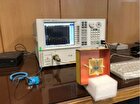Groundbreaking CLEAR Study to Facilitate Electron-Based Cancer Therapy

Currently, there are cancer tumours that neither conventional radiation therapy, chemotherapy, nor surgery can cure. These resilient tumours contribute to the devastatingly high mortality rates of the disease, the Innovation News Network reported.
However, scientists around the world are working to make cancer fatalities a thing of the past. Amongst the most recent medical and technological innovations, progress in particle therapy – the process of irradiating tumours utilising highly energetic particle beams generated by a particle accelerator – enables the effective treatment of tumours that may otherwise have been fatal.
At present, more than 10,000 small electron linear accelerators (linacs) are applied for cancer treatment worldwide. The majority of these systems depend on photon beams produced by electrons to irradiate their target. However, some apply the electron beam itself for direct low-energy electron irradiation, though this is only capable of reaching superficial tumours. These techniques differ from hadron therapy, a method centred on irradiation with protons or heavy ion beams.
One potential accompaniment to hadron and low-energy electron therapy is the utilisation of high-energy electron beams within the 50-200 MeV range, which can deeply infiltrate the tissues. Though, currently, this method is seldom applied because of the higher cost and larger size of the accelerator required to generate them in comparison to photon facilities.
Additionally, their depth profile is less well defined than what is accomplished with hadron beams. However, the latest advancements in high-gradient acceleration for compact linear accelerators, primarily led by the CLIC study at CERN, have begun to change the story.
The CERN researchers’ latest discoveries represent significant progress in the direction of the utilisation of high-energy electron beams. Two studies including researchers from the University of Strathclyde and the University of Manchester were conducted at CERN’s linear electron accelerator for research (CLEAR), a test facility that aids with research and development efforts on accelerator technology.
The scientists investigated a novel irradiation method comprising very high-energy electron (VHEE) beams concentrated on a small spot in order to attain higher beam density. By focusing a VHEE beam with a big aperture electromagnetic lens, they determined that the particles could move a few centimetres deep into a water phantom without experiencing substantial scattering – that is, while staying centred on a well-defined, targeted volume. Such a beam could, in theory, be applied to treat deep-seated cancerous cells with very little damage to the adjacent tissues.
The results from this innovative study indicate great promise for the medical technology community for a number of reasons. Firstly, VHEE beams created by compact linacs in clinical settings would present a far more economical substitute to other particle beam therapies, and would also offer doctors an extremely dependable medium, as their scattering in inhomogeneous tissue is small. The combination of these elements has the potential to significantly increase the amount of patients suitable for electron therapy. As well as this, VHEE beams would be reconcilable with FLASH radiotherapy, a method for providing highly energetic particles to tissues almost instantly, within less than a second.
Recently, CERN and the Lausanne University Hospital (CHUV) have been collaborating with the objective of constructing a high-energy clinical facility for FLASH therapy, with preliminary tests to be conducted at the CLEAR facility.
The ultra-focused VHEE beam is the direct consequence of developments in linear acceleration technology accomplished by the CLIC study at CERN. It demonstrates the significance of this field of research, not just for particle physics, but for the whole of society. While it is necessary to conduct further research into VHEE beams before practical applications in a clinical setting are discovered, the CLEAR findings add to expanding the field of possibilities for cancer treatment.
4155/v
























